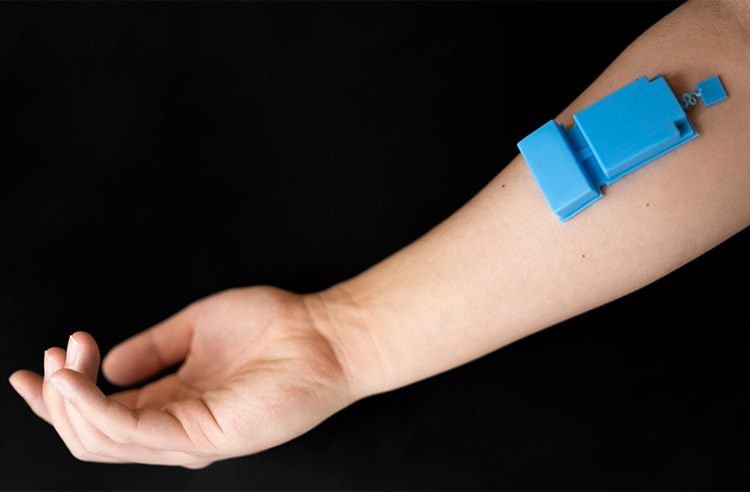Wearable Ultrasound Device Provides Long-Term, Wireless Muscle Monitoring
Posted on 01 Nov 2024
Electromyography (EMG) is the current clinical standard for monitoring muscle activity, utilizing metal electrodes placed on the skin to capture electrical signals from muscles. Despite its long-standing use, EMG faces challenges such as low resolution and weak signals. For instance, signals from multiple muscle fibers often blend, complicating the isolation of contributions from individual fibers. On the other hand, ultrasound offers high-resolution imaging that penetrates deep tissues, providing detailed insights into muscle function. Now, researchers have introduced a new wearable ultrasound technology for muscle monitoring that could serve as a promising alternative to EMG.
Engineers at the University of California San Diego (La Jolla, CA, USA) have created a wearable ultrasound device capable of long-term, wireless monitoring of muscle activity, with potential applications in healthcare and human-machine interfaces. The device is encased in flexible silicone elastomer and includes three main components: a single transducer for sending and receiving ultrasound waves, a custom-designed wireless circuit that controls the transducer, records data, and transmits it to a computer, and a lithium-polymer battery that provides power for at least three hours. Designed to adhere to the skin with an adhesive layer, the device allows for high-resolution tracking of muscle function without the need for invasive procedures. Additionally, the ultrasound technology is compact, wireless, and energy-efficient.

A significant innovation of this work is the utilization of a single ultrasound transducer to effectively sense deep tissues. This transducer emits intensity-controlled ultrasound waves and captures radiofrequency signals rich in information, enabling clinical applications such as measuring diaphragm thickness. By leveraging these signals, the device achieves high spatial resolution, which is essential for isolating specific muscle movements. To gain further insights from these signals, the researchers developed an artificial intelligence algorithm that maps the signals to their corresponding muscle distributions, allowing it to accurately identify specific hand gestures from the collected data.
In tests, the device was worn over the rib cage to monitor diaphragm motion and thickness, critical metrics for evaluating respiratory health. When worn on the rib cage, the device was able to measure diaphragm thickness with submillimeter precision. This measurement is clinically significant for assessing diaphragm dysfunction and predicting outcomes in ventilated patients. Additionally, by analyzing muscle motion, the researchers could differentiate between various breathing patterns, such as shallow versus deep breaths, which could aid in diagnosing conditions related to respiratory irregularities, including asthma, pneumonia, and chronic obstructive pulmonary disease (COPD). In a small trial, the device successfully distinguished the breathing patterns of individuals with COPD from those of healthy participants.
Furthermore, in research published in Nature Electronics, the team demonstrated the device's application on the forearm to capture hand and wrist muscle activity, enabling its use as a human-machine interface for controlling a robotic arm and playing a virtual game. When used on the forearm, the device precisely tracked muscle motion in the hands and wrists. Thanks to the artificial intelligence algorithm, the system can recognize various hand gestures based solely on ultrasound signals. It can identify 13 degrees of freedom, covering 10 finger joints and three wrist rotation angles, thus capturing even minor movements with high sensitivity. In proof-of-concept tests, participants controlled a robotic arm to pipette water into beakers and played a virtual game, steering a virtual bird through obstacles using wrist movements. Going forward, the researchers aim to enhance the technology’s accuracy, portability, energy efficiency, and computational capabilities.














